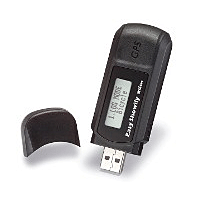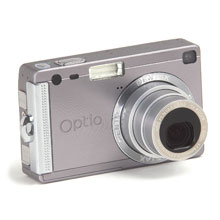Earlier this year I looked into Ultralight GPS Units. I ended up trying out the Garmin Forerunner 405, but wasn't thrilled with it. I liked the watch form-factor, but it was clunky to use and was missing an Altimeter. It also came with a weird USB-cable which made field-charging it somewhat difficult.
In the end, I decided a basic GPS logger is all I needed. A GPS logger will record waypoints – show basic lat|long information on a screen and they usually run on easily field-replaceable batteries. It doesn't come with a fancy color screen and map data like the traditional GPS units.
The Easy Showily , as awkward as the name might be – came up trumps. This is a deceptively excellent device.

First and foremost – the device is incredibly small and light – weighing in at 1.3 oz without batteries.
Secondly – it has amazing battery life. I used AAA Energizer Lithium Batteries and got over 20 hours of logging-time per pair. A pair weighs in at 0.3 oz.
Digging a little deeper – the cap comes off and reveals a USB plug. The device is elegantly simple – in that it does not require drivers or special software to operate. The USB connection exposes a typical thumb-drive (albeit with a meagre 5Mb of storage), and as the GPS unit logs data, it simply writes the way points to a file on the drive.

When you insert the device into a PC, windows detects it as a Thumb Drive and auto-runs the Win_Tool.exe application installed on the thumb drive. This application proceeds to unpack the data file into many different formats – a GPX file – the most common GPS exchange file format, and a collection of HTML and Javascript files that it then proceed to open a browser on – which uses Google Maps to display your way-points. I get all the benefits of Google Maps terrain data without needing to install special mapping software on my machine.

A side-bar allows you to show each GPS ˜track' (a collection of way points), and overlay other information – such as ˜push-pin' data, direction, speed etc.
Ideal for multi-day trips, the Easily Showily can store almost 100,000 way points. When logging aggressively – as a way-point every 10 seconds – that's over 23days of continuous data assuming 12 hrs of hiking a day!
It's chocked full of other features like power-saving shake-activated mode, photo-location-tagging software, multiple recording modes (bike, walk, run, car etc) and more.
Costs about $99 from ˜Buy GPS Now'.
And the point of carrying a GPS? So I can easily crank out maps like this one of our Pasayten Trip.





 One thing that caught my eye was some crazy small and light tent pegs.
One thing that caught my eye was some crazy small and light tent pegs.








